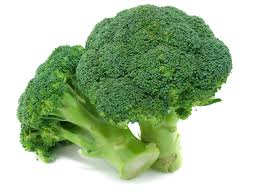
Introduction
Broccoli has had a resurgence in popularity – for its high vitamin content and anti-cancer agents. It is a fast-growing and easy-to-grow crop, producing bluish-green heads that are harvested in the summer or autumn, depending on the time it is sown. The sprouting types – white or purple sprouting – are hardy and overwintered for harvest in spring, filling the gap between sprouts and spring cabbage.
Seeding
Seeds are generally sown between March and June. Sow two seeds per cell of cell trays in a greenhouse or similar environment until April and outdoors from April. Thin to one plant as soon as the seedlings can be handled.
Give liquid fertiliser every week. When rootball is well bound together plant out into any fertile garden soil in full sun or very light shade.
Better heads are produced in cooler summers as hot weather can encourage plants to run to seed prematurely – some cultivars resist this tendency better than others (see Recommended varieties).
Allow 30cm (12in) between plants and 45cm (18in) between rows. Closer spacing will reduce the number of side shoots formed.
Before planting add 150g per square metre/yard of general purpose fertiliser such as Growmore, or, if manure or other rotted organic matter has been dug in, use half amount of fertiliser.
 From April, seeds can be sown in the open where the plants are to grow; sow three seeds, 2cm (¾in) deep, every 30cms (12in) along the row. When seedlings are large enough to be handled, thin out each ‘station’ leaving one healthy seedling behind.
From April, seeds can be sown in the open where the plants are to grow; sow three seeds, 2cm (¾in) deep, every 30cms (12in) along the row. When seedlings are large enough to be handled, thin out each ‘station’ leaving one healthy seedling behind.
Cover seedlings and seed beds with fleece to exclude cabbage root fly, removing fleece in May when risk of damage less.
Plant Care
Broccoli prefers fertile, well-drained, moisture-retentive soil.
When the young broccoli plants are 10-15cm (4-6in) high transplant indoor grown plants to their growing positions, leaving 45cm (18in) between them. Before lifting the plants, water them well and water well again after transplanting.
Thin directly-sown broccoli to 30cm (1ft) apart.
Water every 10-14 days in dry periods. Add high nitrogen fertiliser, such as sulphate of ammonia, at 35g (1oz) per square metre/yard when plants about 20cm (8in) tall.
Troubleshooting Growing Problems
Birds: Birds, especially pigeons, can cause an array of problems including eating seedlings, buds, leaves, fruit and vegetables.
Caterpillars: A number of caterpillars will feed on brassicas, but the most common are those of cabbage white butterflies. You will usually see the caterpillars, if not, you will see the holes they make in the leaves. They will also bore into the heart of cabbages.
Club root: Roots become swollen and distorted, and leaves become pale and yellow and wilt easily. Plants may die.
Cabbage root fly: White larvae approximately 5cm (2in) long, feed on the roots just below the soil surface, stunting growth and causing plants to wilt and die.
Harvesting

Cut when the flower shoots (spears) are well formed but before the individual flowers begin to open. Cut the central spear first. This is followed by a series of sideshoots, which can be picked regularly over four to six weeks.
Companion Planting
Helps
Beets, onions, potatoes, cereals (e.g. corn, wheat)
Helped By
Beets, spinach, chard, Aromatic plants or plants with many blossoms, such as celery, chamomile, and marigolds.Dill, sage, peas, peppermint, spearmint, spurrey, rosemary, rye-grass, garlic, onions and potatoes. geraniums, alliums, nasturtium, borage, hyssop, tansy, tomatoes, thyme, wormwood, southernwood, beans, clover
Repels
wireworms
Avoid
Mustards, tomatoes, peppers, pole beans, strawberries
Varieties
Recipes

Leave a Reply
You must be logged in to post a comment.